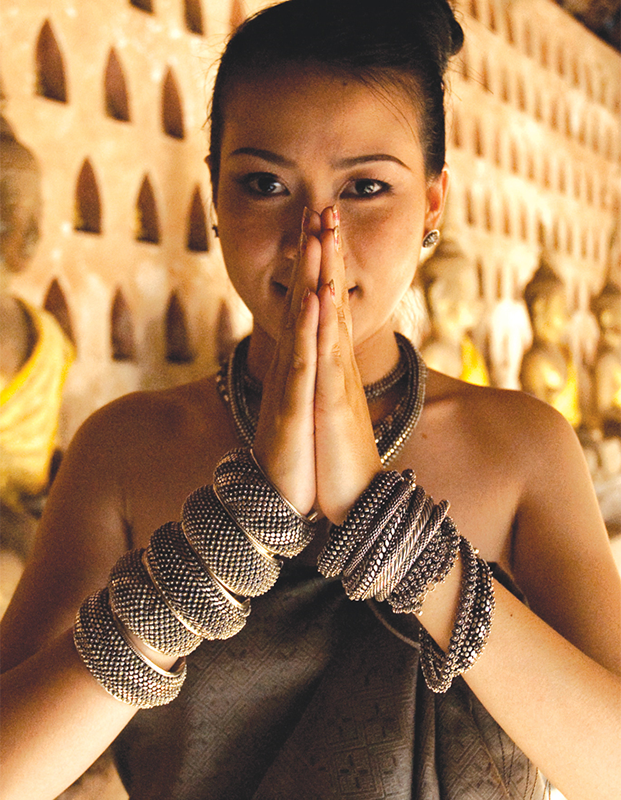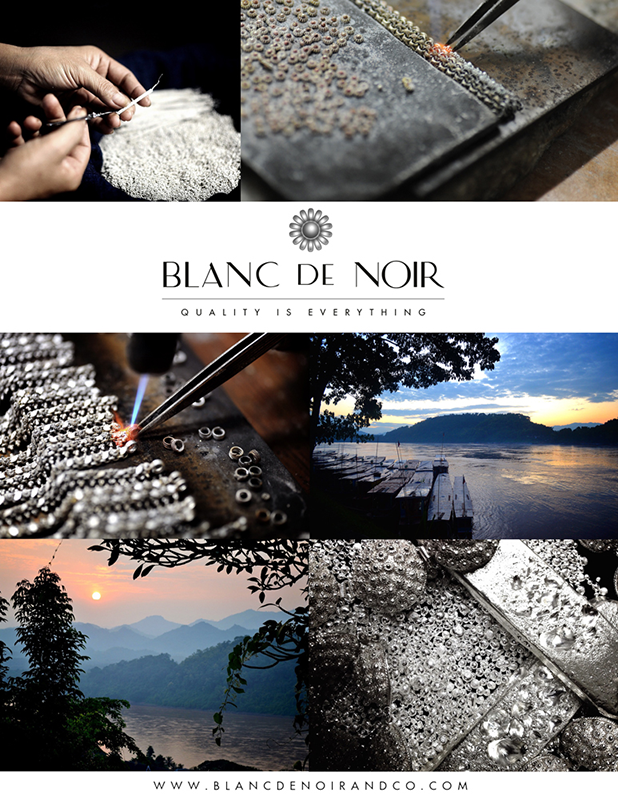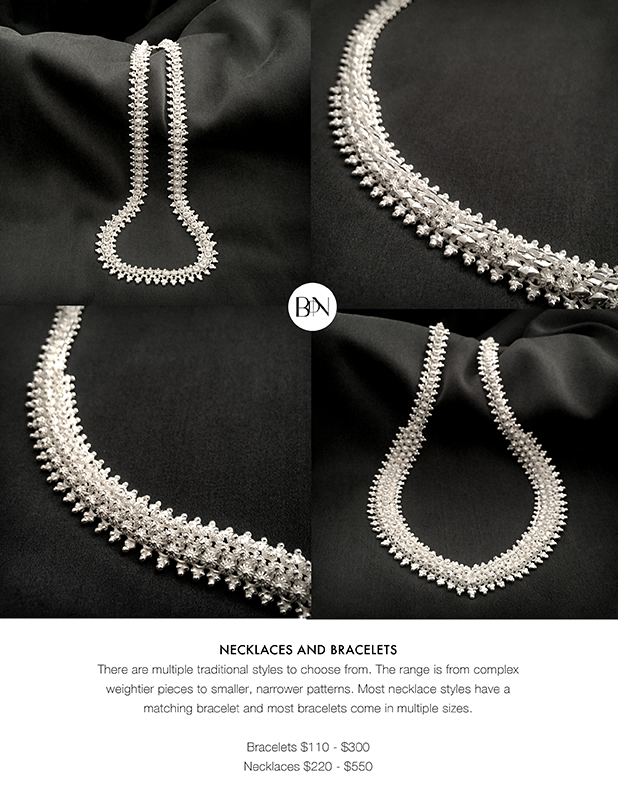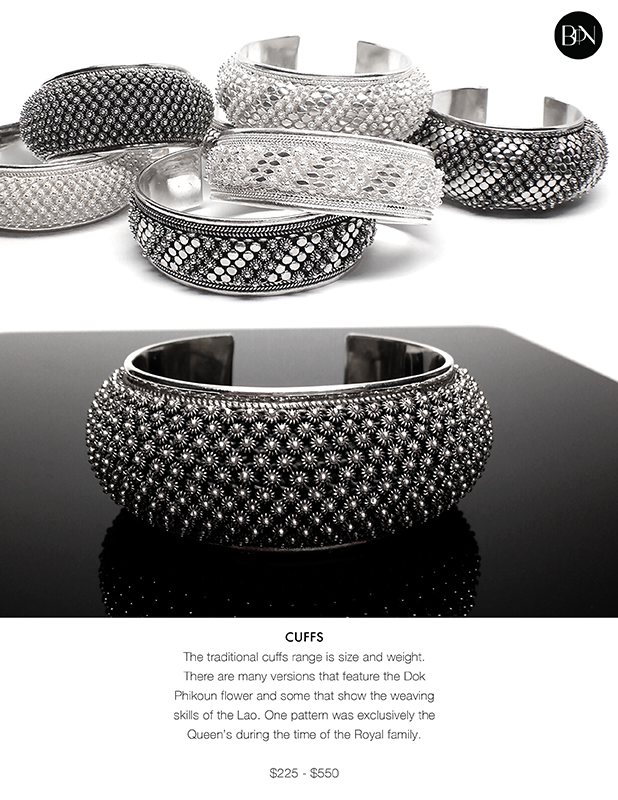Artist:
Darouny Thongdynalai
Region:
Country:
Organization:
Media/General:
Medium of Work:
Year(s) Attended:
About:
Silverwork is an integral artform to both traditional and contemporary Lao culture. It goes back several centuries, and was a splendid part of court life. Many motifs offered by family-owned jewelers Blanc de Noir were initially reserved for royal use, and some resonate with symbolism and myth in ways that have been lost in neighboring Southeast Asian cultures.
For hundreds of years, Lao silver jewelry was bought for ceremonies and special occasions, and as an investment. It was often buried in clay pots in backyards—a safer place to keep the family’s treasure than in volatile banks. Silverwork represents family treasure even today, especially to the few artisans still skilled enough to work the way their ancestors did. In many cases, patterns and styles are specific to certain families; Blanc de Noir, now entering its fourth decade, puts subtle twists on ancient designs. For example, every item created includes a symbolic flower of prosperity, which relates to ancient times, when the embellishment was only made by royalty-approved artisans.
Blanc de Noir’s artisans are aware of how important it is to preserve jewelry-making techniques in danger of being lost today. There are very few jewelers with the skill and training necessary to produce traditional Lao jewelry. Blanc de Noir takes enormous—and well-deserved—pride in the creation of each braided-silver necklace, gorgeously adorned bangle, and delicate pair of earrings they produce.




